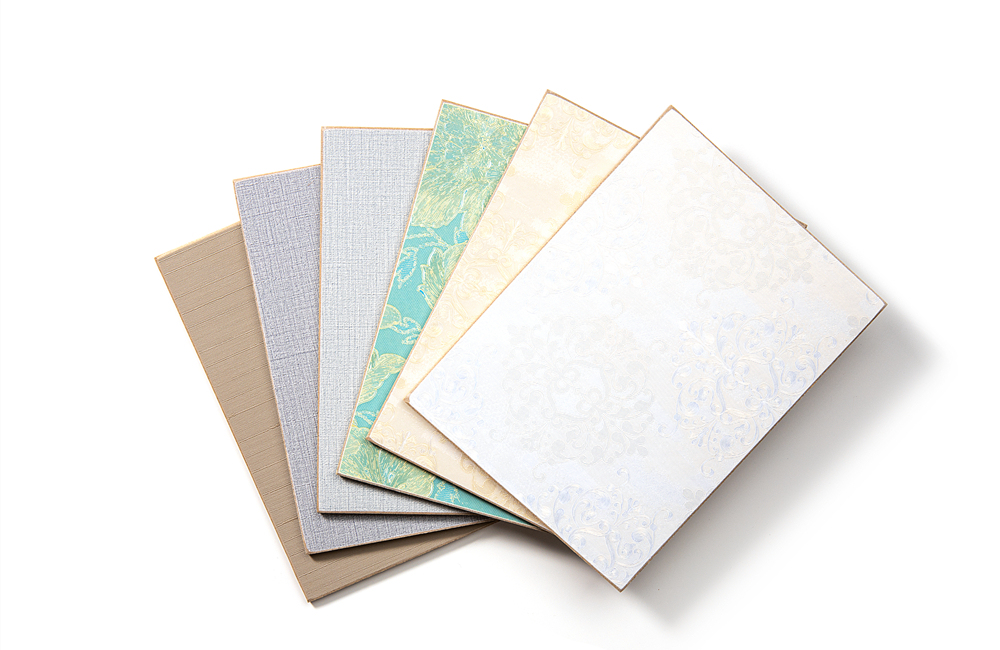
PVC Cladding Fiber Cement Wall Panels Vs Traditional Wall Materials
PVC cladding fiber cement wall panels differ from traditional wall materials in several significant ways, offering a range of benefits that cater to modern construction requirements.
Here's a comparison highlighting their differences:
PVC Cladding Fiber Cement Wall Panels: PVC cladding decorative cement boards combine PVC (Polyvinyl Chloride) and fiber cement, resulting in a composite material that offers unique properties in terms of durability, insulation, and design flexibility.
Traditional Wall Materials: Traditional walls are often constructed using materials like brick, concrete blocks, or wood studs with plaster or drywall finishes.
PVC Cladding Fiber Cement Wall Panels: These panels often feature integrated insulation properties due to the combination of PVC and fiber cement, providing enhanced thermal and acoustic insulation without the need for extra layers.
Traditional Wall Materials: Traditional materials may lack effective thermal and sound insulation, requiring additional insulation layers for improved performance.
PVC Cladding Fiber Cement Wall Panels: These panels are relatively lightweight, reducing the structural load on the building. This characteristic is especially advantageous for renovation projects and lightweight construction.
Traditional Wall Materials: Materials like brick and concrete can be heavy, necessitating robust structural support.
PVC Cladding Fiber Cement Wall Panels: The prefabricated nature of these panels allows for faster installation, as they can be easily attached to existing structures or incorporated into new builds.
Traditional Wall Materials: Construction using traditional materials can be time-consuming due to processes like bricklaying or concrete pouring.
PVC Cladding Fiber Cement Wall Panels: They are available in various designs, textures, and colors, offering designers and architects more flexibility in achieving specific aesthetics without the need for additional treatments.
Traditional Wall Materials: Traditional materials may limit design options and require additional finishing techniques for customization.
PVC Cladding Fiber Cement Wall Panels: The composition of PVC and fiber cement makes PVC decorative cement boards highly resistant to moisture, ensuring durability and reducing the risk of water-related damage.
Traditional Wall Materials: Some traditional materials, like wood, can be susceptible to moisture-related issues such as rot or mold.
PVC Cladding Fiber Cement Wall Panels: They typically have low maintenance needs due to their durable and weather-resistant properties.
Traditional Wall Materials: Maintenance requirements for traditional materials can vary and may involve repainting, sealing, or repairs.
PVC Cladding Fiber Cement Wall Panels: The use of fiber cement, which often includes recycled materials, and PVC's durability can contribute to a more sustainable building approach.
Traditional Wall Materials: Some traditional materials can have a higher environmental impact due to resource-intensive production processes.
In summary, PVC cladding fiber cement wall panels offer a modern alternative to traditional wall materials, delivering advantages in terms of insulation, weight, installation speed, customization, durability, and environmental considerations. The unique composition of PVC cladding decorative cement boards addresses many of the limitations associated with traditional construction methods, making them a versatile and efficient choice for contemporary building projects.
Here's a comparison highlighting their differences:
Composition
PVC Cladding Fiber Cement Wall Panels: PVC cladding decorative cement boards combine PVC (Polyvinyl Chloride) and fiber cement, resulting in a composite material that offers unique properties in terms of durability, insulation, and design flexibility.
Traditional Wall Materials: Traditional walls are often constructed using materials like brick, concrete blocks, or wood studs with plaster or drywall finishes.
Insulation
PVC Cladding Fiber Cement Wall Panels: These panels often feature integrated insulation properties due to the combination of PVC and fiber cement, providing enhanced thermal and acoustic insulation without the need for extra layers.
Traditional Wall Materials: Traditional materials may lack effective thermal and sound insulation, requiring additional insulation layers for improved performance.
Weight and Structural Support
PVC Cladding Fiber Cement Wall Panels: These panels are relatively lightweight, reducing the structural load on the building. This characteristic is especially advantageous for renovation projects and lightweight construction.
Traditional Wall Materials: Materials like brick and concrete can be heavy, necessitating robust structural support.
Installation Time
PVC Cladding Fiber Cement Wall Panels: The prefabricated nature of these panels allows for faster installation, as they can be easily attached to existing structures or incorporated into new builds.
Traditional Wall Materials: Construction using traditional materials can be time-consuming due to processes like bricklaying or concrete pouring.
Customization and Design
PVC Cladding Fiber Cement Wall Panels: They are available in various designs, textures, and colors, offering designers and architects more flexibility in achieving specific aesthetics without the need for additional treatments.
Traditional Wall Materials: Traditional materials may limit design options and require additional finishing techniques for customization.
Moisture Resistance
PVC Cladding Fiber Cement Wall Panels: The composition of PVC and fiber cement makes PVC decorative cement boards highly resistant to moisture, ensuring durability and reducing the risk of water-related damage.
Traditional Wall Materials: Some traditional materials, like wood, can be susceptible to moisture-related issues such as rot or mold.
Maintenance
PVC Cladding Fiber Cement Wall Panels: They typically have low maintenance needs due to their durable and weather-resistant properties.
Traditional Wall Materials: Maintenance requirements for traditional materials can vary and may involve repainting, sealing, or repairs.
Environmental Impact
PVC Cladding Fiber Cement Wall Panels: The use of fiber cement, which often includes recycled materials, and PVC's durability can contribute to a more sustainable building approach.
Traditional Wall Materials: Some traditional materials can have a higher environmental impact due to resource-intensive production processes.
In summary, PVC cladding fiber cement wall panels offer a modern alternative to traditional wall materials, delivering advantages in terms of insulation, weight, installation speed, customization, durability, and environmental considerations. The unique composition of PVC cladding decorative cement boards addresses many of the limitations associated with traditional construction methods, making them a versatile and efficient choice for contemporary building projects.






